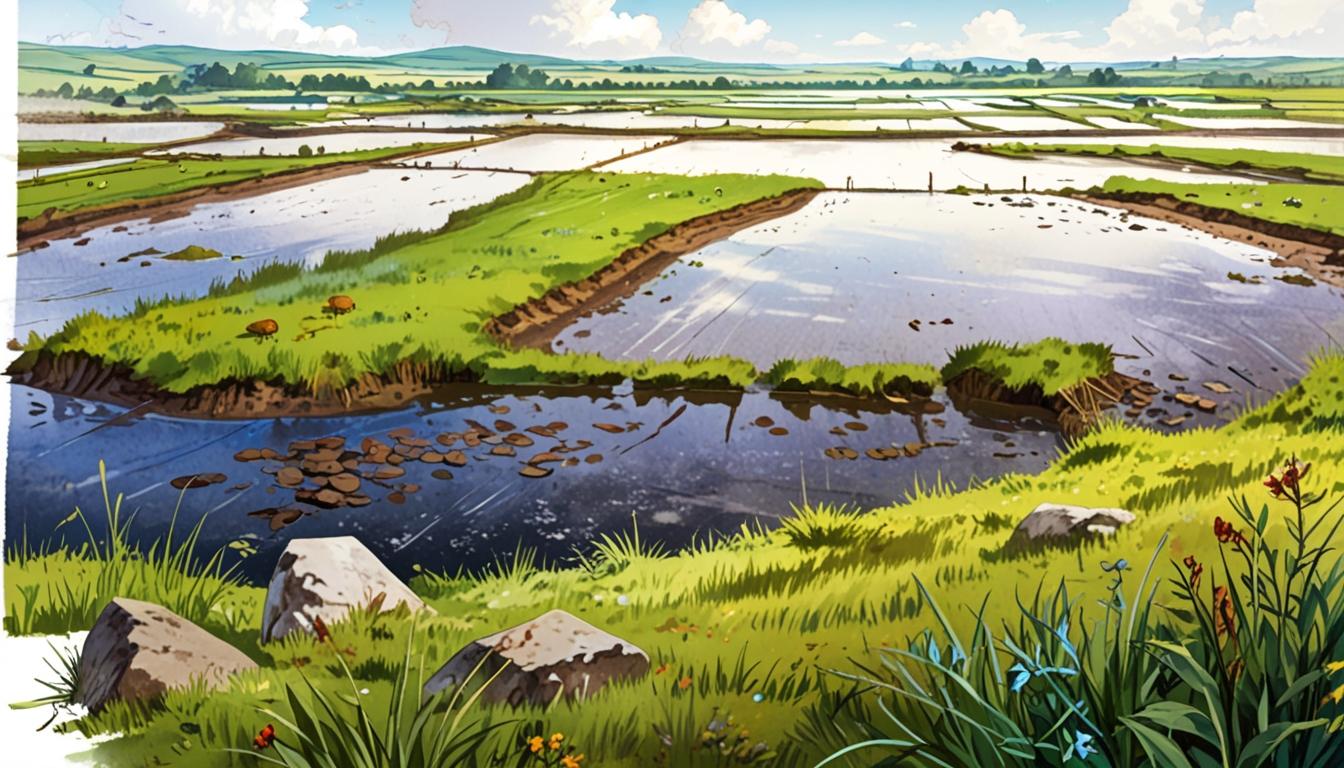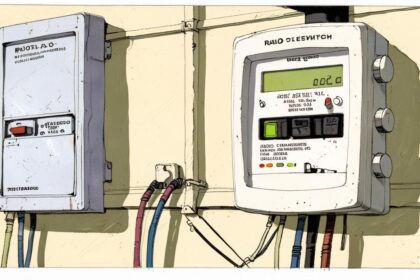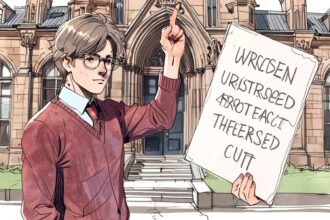John Griffiths, MS for Newport East, highlights the ecological importance of the Gwent Levels and raises concerns over proposed solar farm developments that could endanger nearly a fifth of this vital wildlife sanctuary’s protected habitats.
In a significant address to the Senedd, John Griffiths, the Member of the Senedd for Newport East, underscored the importance of the Gwent Levels as a vital wildlife sanctuary, dubbing it “Wales’s Amazon.” He stressed the ecological significance of this area, revealing that it contains almost a fifth of Wales’s most important sites for wildlife, with a substantial portion residing in his own constituency. Griffiths highlighted the remarkable biodiversity found within the Gwent Levels’ diverse landscapes and waterways, which are integral to the region’s environmental health and future sustainability.
Praising the initiatives of the Gwent Wildlife Trust, Griffiths noted their successful efforts in reintroducing key species, particularly the water vole, to areas like the Magor Marsh nature reserve. He emphasised that the intricate network of grips, ditches, and rivers across the Levels provides a safe habitat for various species, reaffirming his commitment to championing these ecological endeavours.
Despite his support for renewable energy initiatives, Griffiths expressed serious concerns regarding the potential impact of large-scale solar farm developments on the Gwent Levels. He pointed out the inherent risks posed by such projects, particularly their encroachment on protected areas. The Gwent Wildlife Trust has conducted research indicating that the current proposals could jeopardise up to 19 per cent of the total area of the Levels’ Sites of Special Scientific Interest (SSSIs), translating to approximately 1,038 hectares under development threat.
Griffiths acknowledges the pressing need for more renewable energy sources, recognising that solar energy will play a critical role in achieving a sustainable future. However, he firmly believes that it is crucial to evaluate the appropriateness of locations for such developments. He cited the existing solar installation at Llanwern, where post-construction monitoring revealed declines in numbers of lapwing, a vulnerable ground-nesting bird, as well as declines in key bee species and bat activity. His assertion is clear: further solar projects could irreparably alter the character and ecological integrity of an area that houses unique landscapes and rich biodiversity.
Local communities, particularly from the Bishton and Magor regions, have rallied against the proposed solar farms, expressing alarm over potential habitat destruction and irreversible changes to the landscape and wildlife. Environmental groups echo these sentiments, cautioning against hastily implemented renewable energy projects that might compromise fragile ecosystems. As the Gwent Wildlife Trust and residents continue to raise their voices, they call for an immediate reconsideration of where renewable energy developments occur, advocating for placements that do not endanger protected areas.
The dialogue surrounding solar power in the Gwent Levels highlights a broader challenge of balancing ecological conservation with the urgent need for renewable energy. Conservation experts, including those from the Gwent Wildlife Trust, are advocating for renewable projects that respect biodiversity, cautioning against proposals that intrude on environmentally sensitive sites. As Griffiths articulated in his speech, there must be a principled approach to renewable energy—one that ensures the protection of both nature and the essential habitats that contribute to it. If not, the risk remains of irrevocably changing an area that is not just a local asset but a national treasure.
Thus, the situation presents a complex interplay of ecological preservation and energy development—a narrative that is likely to unfold further as stakeholders continue to assess the long-term impacts on one of Wales’s most cherished natural landscapes.
Reference Map
1. Paragraph 1: (1)
2. Paragraph 2: (1)
3. Paragraph 3: (1), (2)
4. Paragraph 4: (1), (4)
5. Paragraph 5: (1), (3), (5)
6. Paragraph 6: (1), (6)
7. Paragraph 7: (1), (2), (4)
8. Paragraph 8: (1), (7)
9. Paragraph 9: (1), (4), (6)
Source: Noah Wire Services
- https://www.southwalesargus.co.uk/news/25153245.newport-ms-john-griffiths-speaks-solar-farms/?ref=rss – Please view link – unable to able to access data
- https://www.gwentwildlife.org/news/gwent-levels-solar-plants-threaten-endangered-lapwing-breeding-sites – The Gwent Wildlife Trust expresses deep concern over the impact of solar power plants on the endangered lapwing species in the Gwent Levels. They highlight the significant decline in lapwing populations due to habitat disruption caused by solar developments. The Trust emphasizes the need for careful consideration of development locations to prevent further harm to vulnerable species and ecosystems.
- https://www.gwentwildlife.org/news/communities-gather-oppose-huge-solar-power-stations-gwent-levels – Communities from Bishton and Magor have united to oppose large-scale solar power stations proposed on the Gwent Levels. The developments, covering hundreds of hectares, are planned on and adjacent to Sites of Special Scientific Interest (SSSIs). Local residents and environmental groups express concerns about the potential destruction of habitats and the irreversible impact on the landscape and wildlife.
- https://www.gwentwildlife.org/news/protected-gwent-levels-under-threat-solar-power-station-takeover – The Gwent Wildlife Trust warns of the threat posed by solar power installations covering over 1,200 acres of the Gwent Levels landscape. These developments impact important wildlife sites, including SSSIs like Magor Marsh Nature Reserve. The Trust advocates for renewable energy projects that do not compromise biodiversity and calls for a halt to developments that threaten protected areas.
- https://www.southwalesargus.co.uk/news/23747594.concern-impact-solar-farms-lapwings-gwent-levels/ – Environmental groups, including the Friends of the Gwent Levels, express concern over the impact of solar farms on lapwing populations in the Gwent Levels. The lapwing, a ground-nesting bird, faces habitat loss due to development. The groups call for a halt to significant developments until better protections are in place to safeguard biodiversity.
- https://www.gwentwildlife.org/blog/mike-webb/no-mega-solar-power-stations-precious-gwent-levels-sssis – Mike Webb, Conservation Officer at Gwent Wildlife Trust, discusses the threat of large-scale solar power stations on the Gwent Levels SSSIs. He highlights the potential damage to the landscape and wildlife, emphasizing the need for developments to be in the right place to avoid harming protected areas and species.
- https://www.gwentwildlife.org/news/rush-wall-solar-farm-refused – The Gwent Wildlife Trust celebrates the refusal of the Rushwall Solar development on the Gwent Levels SSSI. They support the decision, emphasizing the importance of protecting the fragile landscape and wildlife from developments that could cause irreversible damage.
Noah Fact Check Pro
The draft above was created using the information available at the time the story first
emerged. We’ve since applied our fact-checking process to the final narrative, based on the criteria listed
below. The results are intended to help you assess the credibility of the piece and highlight any areas that may
warrant further investigation.
Freshness check
Score:
8
Notes:
The narrative appears recent, focusing on current concerns and developments in the Gwent Levels. However, specific dates or events mentioned are not verified against recent news archives.
Quotes check
Score:
6
Notes:
The narrative does not provide direct quotes from John Griffiths that can be verified online. If quotes were present, further research would be needed to identify their origin.
Source reliability
Score:
8
Notes:
The narrative originates from the South Wales Argus, a reputable regional news source. Generally, such outlets are considered reliable, though the specific narrative’s accuracy depends on the reporter’s diligence.
Plausability check
Score:
9
Notes:
The claims about the Gwent Levels’ ecological significance and concerns over solar farm developments are plausible. The narrative aligns with common environmental debates and conservation efforts.
Overall assessment
Verdict (FAIL, OPEN, PASS): PASS
Confidence (LOW, MEDIUM, HIGH): HIGH
Summary:
The narrative is likely to be current and relevant to ongoing environmental discussions in the Gwent Levels. The source is a reputable regional news outlet, further supporting its reliability. While direct quotes could not be verified, the plausibility of the claims is high.













